Hello lovely Steemians !
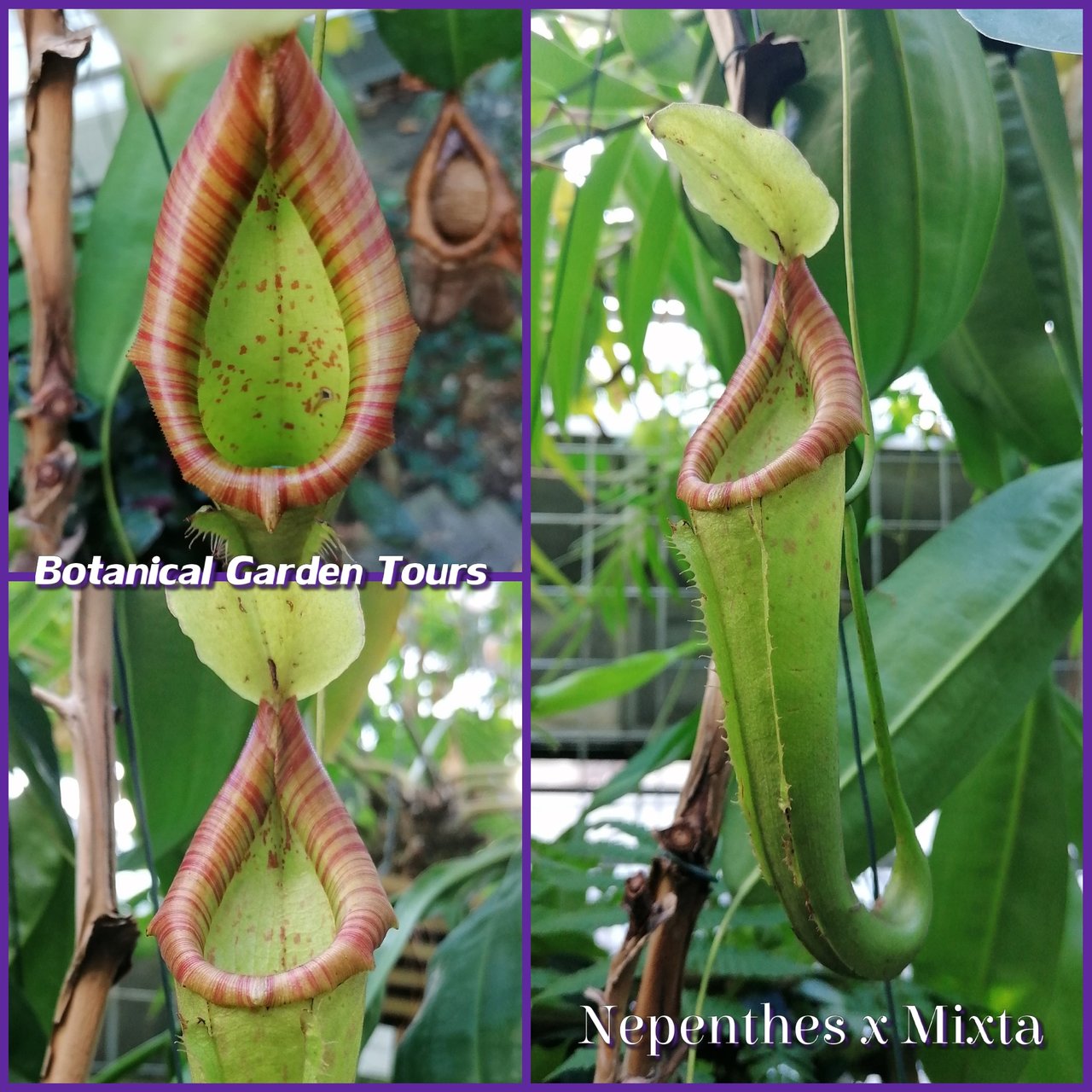
Welcome to another day of the Botanical Garden Tours. Today I want to present to you the Nepenthes x Mixta, also known as the Pitcher Plant or the Monkey Cup. This rather funny name refers to the fact that it has been observed that monkeys are drinking rainwater from these plants.
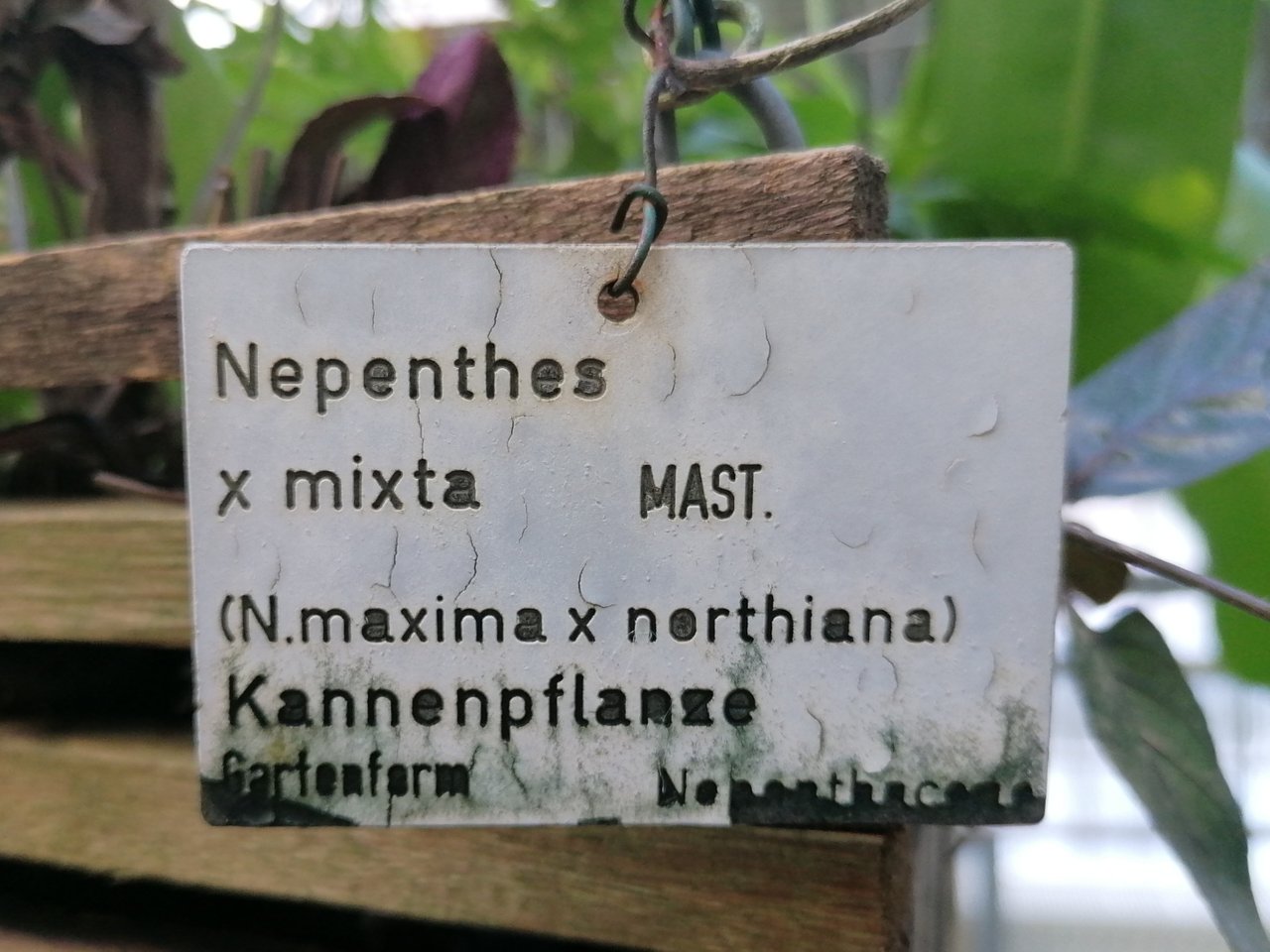
The family of the Nepenthes belong to the carnivorous plants, which count more then 170 different species. Those are common in rather tropical regions and can be found mainly everywhere in Southeast Asia, but also appear in adjacent parts of South Asia as well as in Madagascar and Australia. Thereby the greatest diversity, half of it, is found in Borneo, Sumatra and the Philippines.
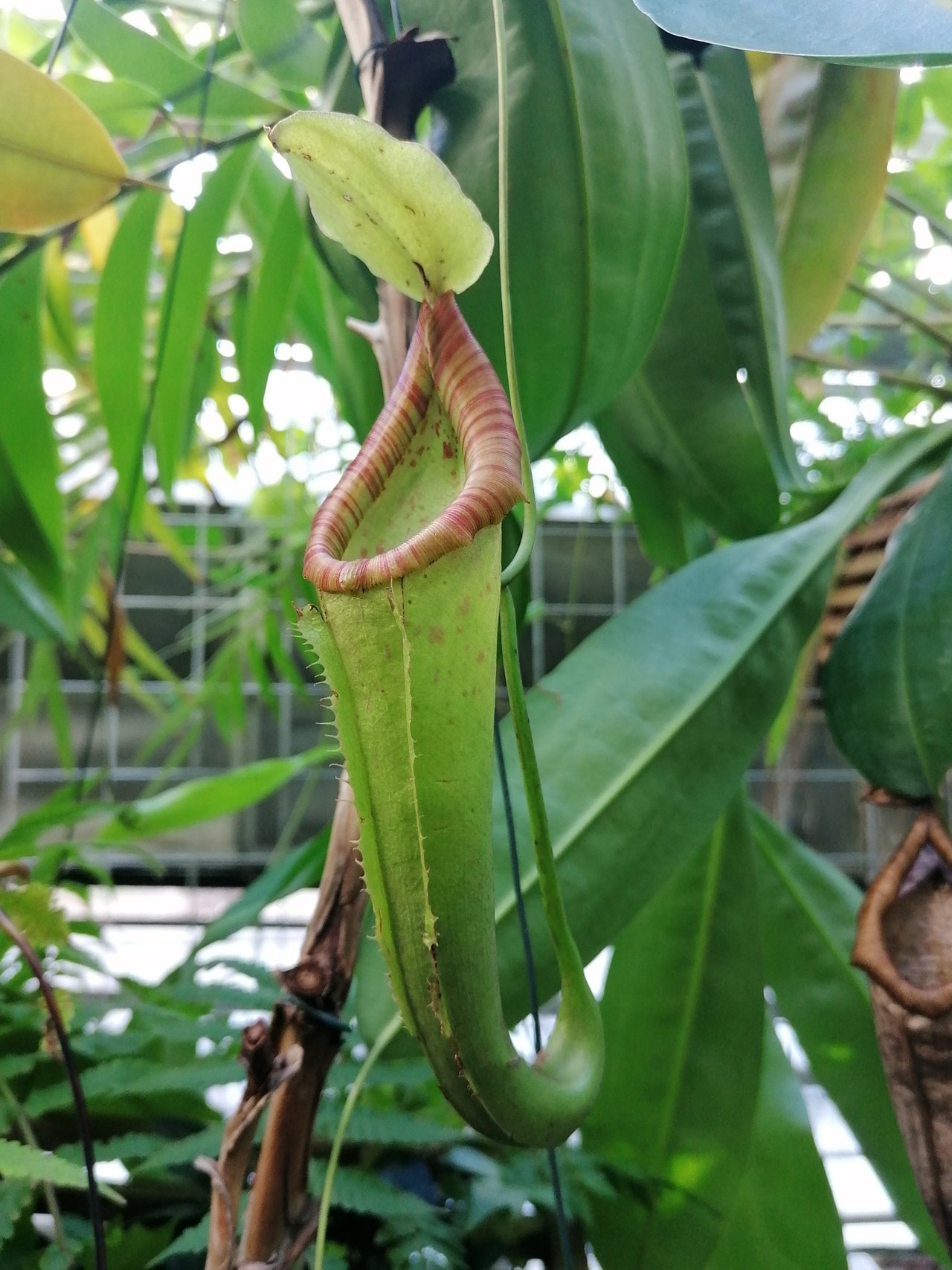
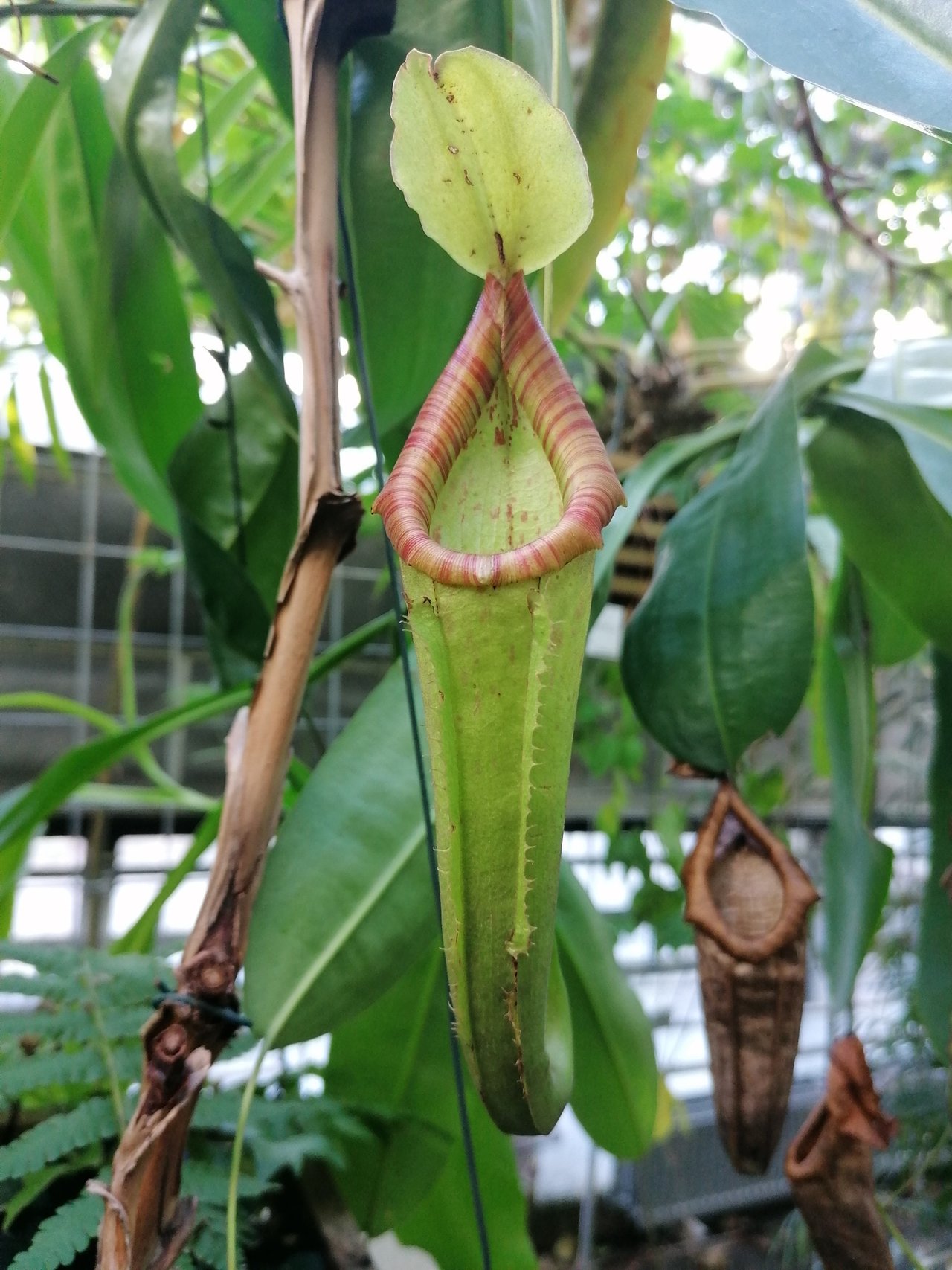
Nepenthes have huge pitchers, compared to other carnivorous plants. They get as huge as 30 cm in length. They are usually completely lime green with several red spots and posses large red lips. Those pitchers are located at a height of 70-100 cm. Other Nephentes species even are found to be located at heights such as 15 m and/or can have a deep red color.
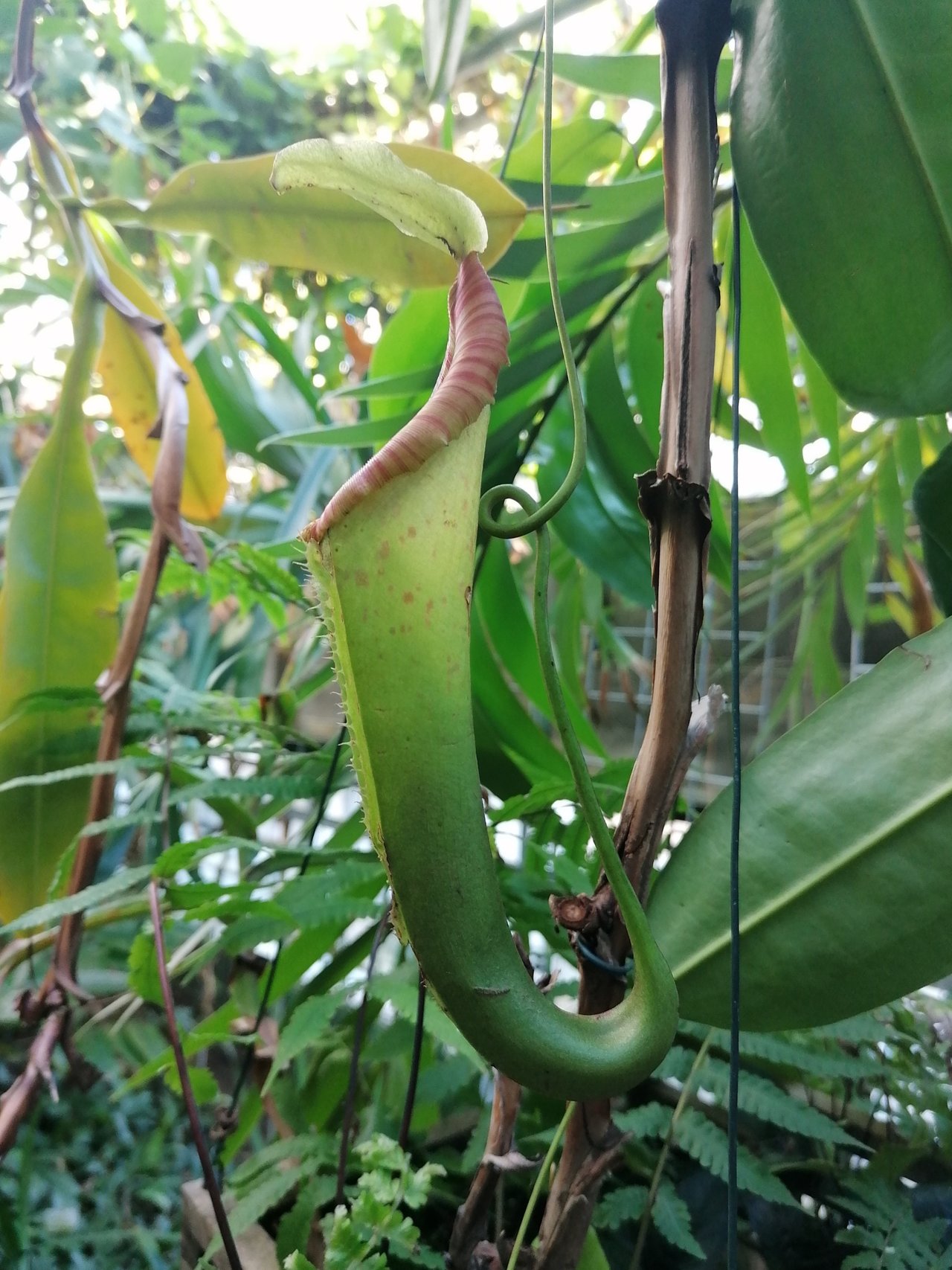
They can even withstand relatively cold temperatures but no frost. Optimal is a range between 10°C to 30°C, but not located where directly exposed to the sun. They also prefer rather wet soil and are dependent on a lot of water and prefer a humidity of at least 80% up to 100%.
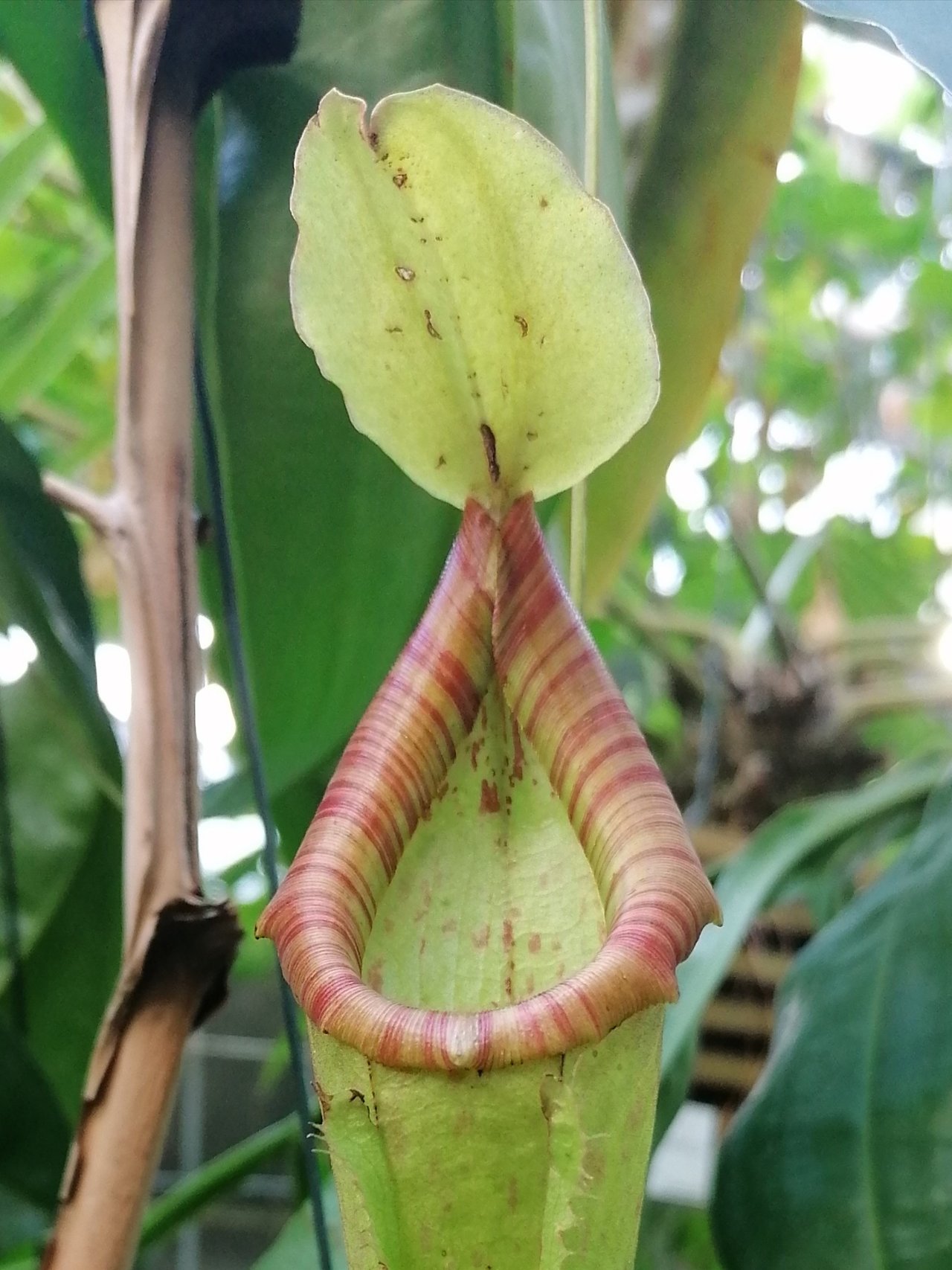
In general carnivorous plants like this Nepenthes, but also any other Pitcher plants are amazing examples of natures creativity. Their former leaves have evolved into pitcher shaped tubes, that are capable of trapping insects inside them. The pray is attract by a secretions from Extrafloral Nectaries with a beautiful scent that is located on the peristome, the outer rim of the tube, that looks like the lips of a mouth. This peristome is quite slippery which causes the lured insects to fall inside the mouth of the tube where they are trapped and subsequently digested.
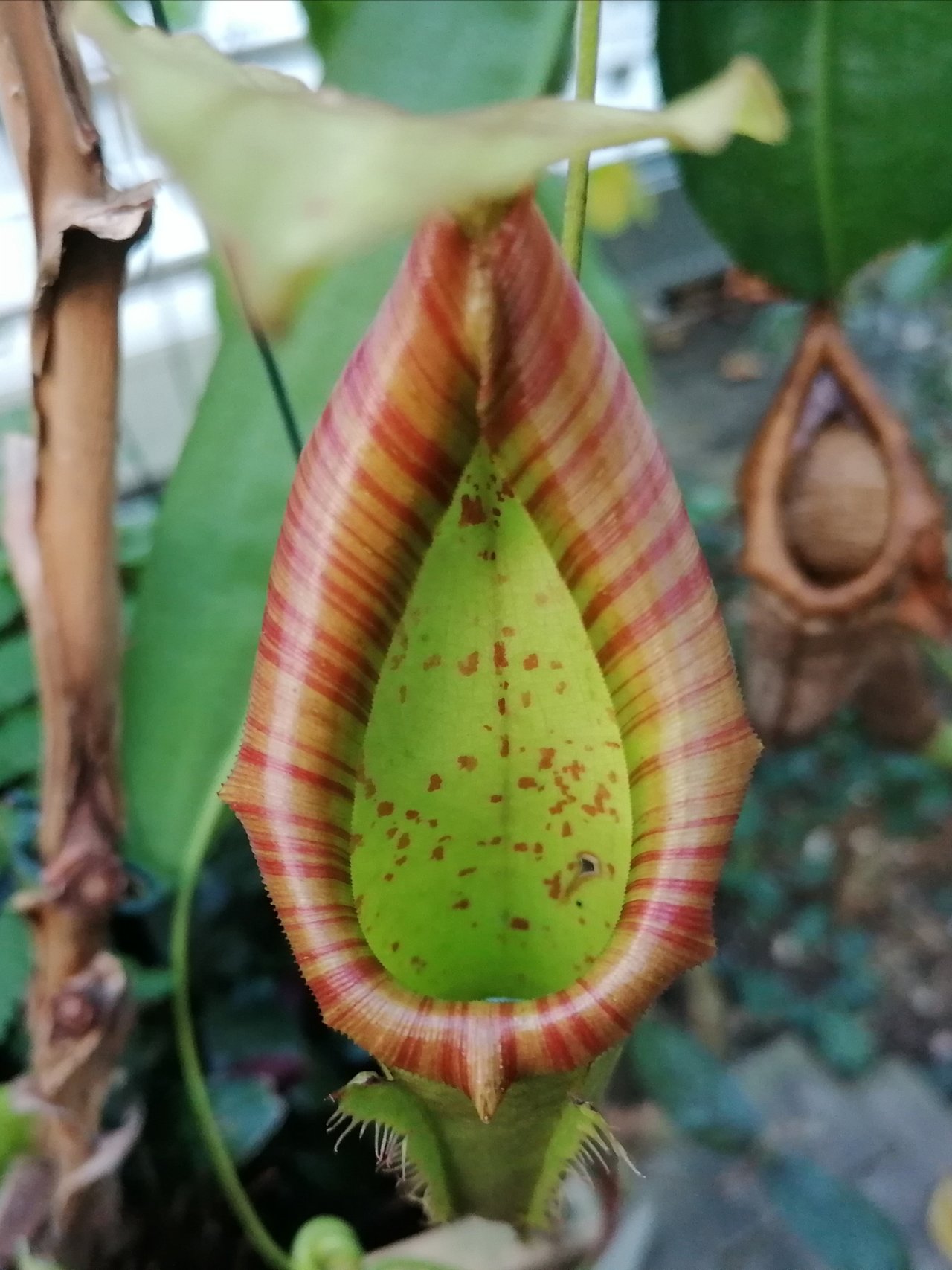
Their usual prey consists of insects, such as flies, mosquitoes, moths, wasps and butterflies. But it was also observed that these carnivorous Pitcher Plants sometimes manage to trap small rats and lizards, as well as small birds.
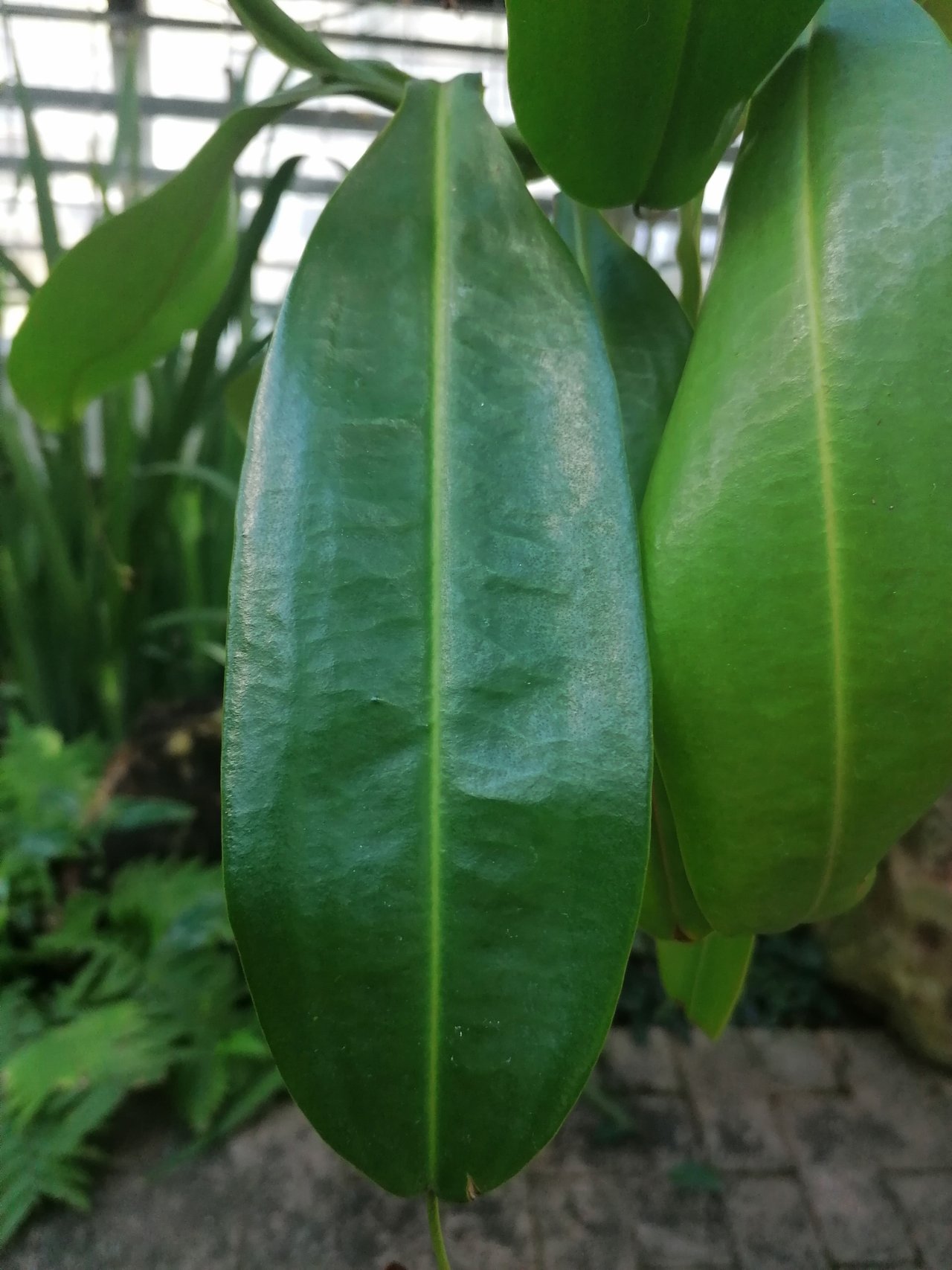
As always I hope that you enjoyed my Botanical Garden Tours. Thank you for your time and see you next episode ^^
All pictures were taken by myself, ©@adalger, with a Huawei P30 Mobile Phone. For information gathering I mainly used Wikipedia.
Previous Entries:
Season #01





If you want to know more about me, just look up my Introduceyourself post or follow my blog ^^
Learn more about @adalger here !
Best wishes,
Adalger
